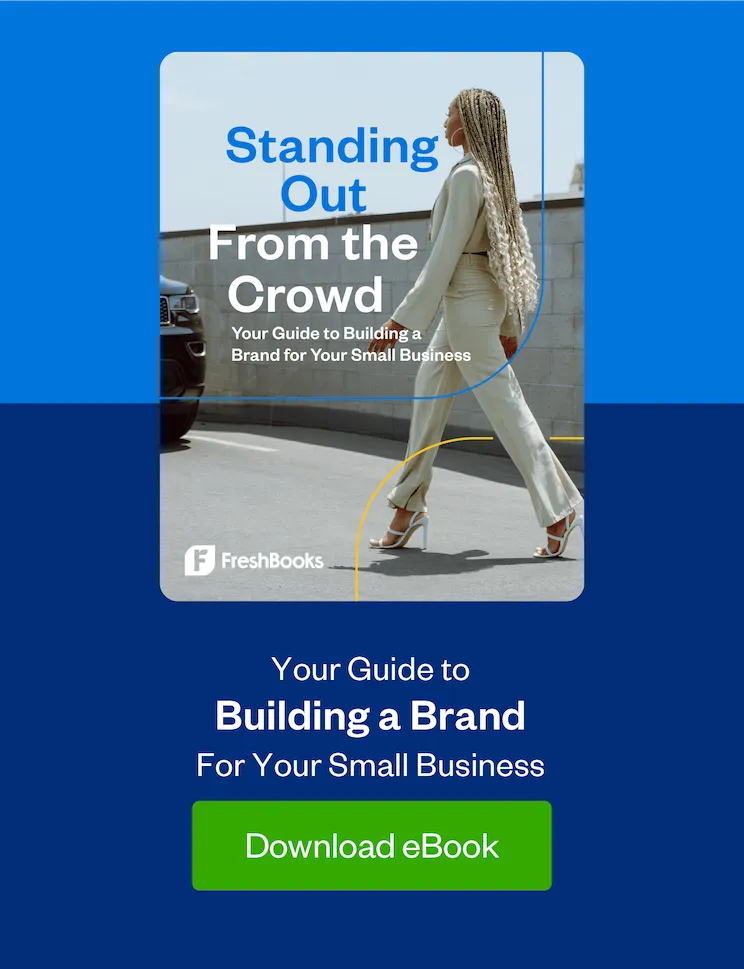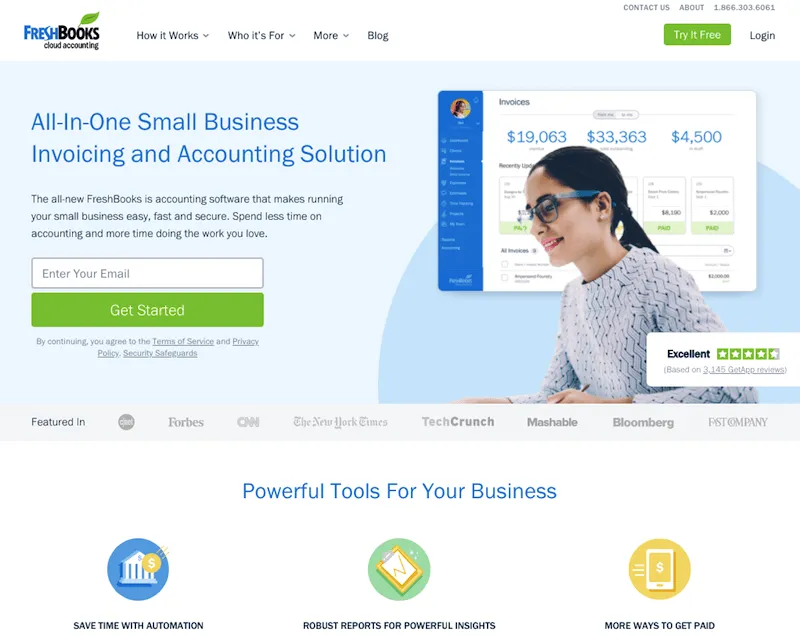Better clients make for better business. But exactly how do you find and attract better clients?

Working with better clients has distinct business advantages. Think prompt payment and improved cash flow, which are key in times of economic uncertainty.
For many business owners, however, bad clients are all too common. These are the types of clients you have to constantly chase for payment, which is difficult at the best of times, let alone when times are tough.
Plus, bad clients are difficult to work with, often requesting changes and expecting you to go the extra mile without paying you a penny.
I found myself working with a problem client early in my writing career. Not only were they always running on tight deadlines, but getting paid was a nightmare. Nevertheless, I continued writing for them because I naively thought things would change.
And when things didn’t change (surprise, surprise), I eventually got fed up and sent them an email politely telling them that I wasn’t going to write for them until all outstanding payments were made. I waited more than a month for my money. Needless to say, I no longer write for that client.
Instead, I now focus on finding better clients: Those who pay me well and on time, give me a constant stream of work, are a pleasure to work with, and give me the opportunity to grow by allowing me to develop and hone new skills.
By working with these clients, you don’t experience cash flow issues due to late payments. This means you can cover your day-to-day costs without having to worry about how you’re going to get the cash. Not to mention the benefits of less stress and anxiety because you’re not worrying about money.
But how do you find and attract these clients? Let’s have a look.
Step 1: Define Your Ideal Client
If you currently have one client who you consider to be better than others, use them as a template to help you find others like them.
But make sure you know what makes them a perfect client. Is it because they’re easy to work with and pay you on time? Perhaps they give you referrals and a constant stream of work you enjoy doing?
Enjoying what you do is just as important as getting paid, and understanding this will help you identify the type of clients you want to work with. For example, if you enjoy developing websites for small retailers and craftspeople, and find that to be a rewarding market to serve, you’ll know that you would rather do that than work for large retail chains.
If you don’t have clients you can use as a template, don’t worry. You can still define your ideal client by looking at what you don’t like about your existing clients. For instance, if you have a client you always have to convince about the value of your services, and who haggles you on price, your dream client would be the opposite.
Defining your dream client from the start will give you criteria that you can use to assess all future clients. And it’s essential that you assess clients based on those criteria. Often freelancers are so keen to land the work that they don’t notice red flags in the onboarding process.
Red flags may include potential clients bad-mouthing previous small businesses, making contradictory statements or going back on their word.
I remember, for example, agreeing to a rate and a 50% deposit with one client. In follow-up emails, the client changed their story entirely, saying they couldn’t pay a deposit because they were a small finance department and preferred making one-off payments. What did I do? I ran as fast as I could.
Beyond defining what you want in a client, also make sure you understand what niche most of your clients fall into as well as their unique problems. Doing this will help you discover where to find them and also help you craft a unique value proposition that talks to them. (We discuss value propositions in Step 5.)
Step 2: Discover Where Your Clients Hang Out
To find where they hang out, ask yourself the following questions:
- What types of websites do they frequent?
- Which social media platforms do they use?
- Are they part of any Facebook groups?
- What offline events do they attend?
As a small business owner who manages a team, you can survey your customers using SurveyMonkey or even Google Forms. By knowing where they hang out, you’ll be poised to find, attract, connect, and sell to them.
Step 3: Find and Connect With Better Clients
Once you know where your dream clients hang out, it’s time to connect with them and build relationships. Here are three ways you can do this:
- For the websites they frequent, consider writing educational and informative content that establishes you as a thought leader.
- Make sure you’re active on the social media networks they’re active on. For example, if clients are more active on Twitter, be more active on Twitter. If clients are more active on LinkedIn, be more active on LinkedIn.
- Connect with them and share content that’s relevant to their industry. In the case of LinkedIn, you can even write and publish posts on the platform to demonstrate your expertise.
I recently used LinkedIn to great effect on my writing business. I used an existing company as a template to find similar companies. Using LinkedIn’s search bar, I typed in the name of the company and used the “People also viewed” section in the bottom right to find similar companies.
I then clicked on those companies to view who worked for them. Because I usually target content managers and content directors, I found those employees and sent them a connection request.
Once they accepted the connection request, I started liking their content and interacting with them. I’ve reached out to several prospects directly and a potential prospect also recently contacted me.
Facebook Groups are another way to connect and find clients. In an article titled 6 Ways to Get Your First Client, Ramit Sethi shares how Luisa Zhou, entrepreneur and writer for GrowthLab, used Facebook groups to help her earn $1.1 million in eleven months. She simply spent time where her prospects spent time. She shared valuable content and helped potential clients by answering their questions.
Step 4: Perfect Your Pitch
Finding and connecting with potential clients is one thing. Reaching out to them to sell your services is another. Make sure that your pitch is on point, tailored and directed to the right person.
For example, if you’re a writer, create a tailored pitch for each client (mention their name and refer to one of their articles you recently read and enjoyed), spend time researching the company to understand their product and what content they publish, and finally, personalize your emails. “Hi [insert name]” will get you better results than just a “Hi” or “Hello.”
These tasks may take a little extra time, but the good news is that by following these simple guidelines you’ll stand out from the many who aren’t making that effort. And, in the process, you’ll increase your chances of landing those clients you want to work with.
To help you perfect your pitch, read the Observer‘s post: 5 Steps to Convert a Cold Email that Converts Clients.
Step 5: Attract Better Clients by Offering Unique Value
Your value proposition will communicate the unique merits you offer. By nailing down your value proposition, you’ll better attract the types of customers you want and filter out those you don’t. That’s why you should spend time working on your proposition and include it on key pages on your website: your home and services pages.
Effective value propositions convey a simple message, highlight your unique value, target a specific customer segment, promise certain benefits and often include testimonials for social proof. They often contain a headline, subhead, bullet points, images, and even video.
Let’s look at an example:
FreshBooks is simple accounting software for small businesses. It’s created to simplify accounting and help small business owners run their business.
How do they rank against the criteria?
- Clear message: Yes, it’s all-in-one business invoicing and accounting software.
- Unique value: Yes, accounting is a struggle for many small business owners. FreshBooks taps into that problem with easy-to-use software that simplifies billing and accounting.
- Specific segment: Yes, small service-based businesses.
- Explicit promise: Again, yes! “FreshBooks is accounting software that makes running your small business easy, fast, and secure,” by providing a solution that allows you to spend less time on accounting and more time on the work you love.
- Social proof: Yes, there are client testimonials explaining why small business owners love the product.
ConversionXL shares several more examples you can use as inspiration to craft your value proposition. They also share a four-step blueprint that I recently used to refine my own proposition:
- Headline that specifies the benefit you offer in one sentence. You can mention the customer and service (like FreshBooks did).
- Subhead of two–three sentences that indicates what you do, for who, and why it’s valuable.
- Bullet points that highlight benefits and features (three points are ideal).
- Any accompanying visuals, e.g., hero shot.
If you’re offering different services, you may need a different value proposition for each service. For example, content strategist and copywriter Jacob McMillen has two different value propositions: One for his copywriting services and another for his content strategy services.
Bonus Tip: Ask for Referrals
If you already have a top client, you can start using this strategy immediately. With this approach, you tap into the existing network of your best clients. Chances are good that the client will have many connections with other similar clients that you’ll enjoy working with.
When using this method, don’t get fancy; a simple email will work. Tell your client that you’re looking for new clients to grow your business and ask if they could refer you. Most clients will be happy to do this for you, but make sure you build a relationship with them first—one where you deliver quality work.
As you get referrals, make sure you don’t make the mistake of keeping your prices the same. Many do that out of fear that their existing client will talk to the potential new client.
This is not the case. And as Sethi mentions in the article I shared earlier: “A lot of freelancers fall into the trap of keeping their rates the same when they get referred thinking that their old client told the potential client your rate (they didn’t). DON’T DO THIS!! Your old client added more value to your work by recommending you. Reflect that with a higher rate.”
Conclusion
Bad clients can wreak havoc. Not only can they have a detrimental impact on your cash flow, but they can also cause you unnecessary stress. Two things you don’t need to be experiencing.
The good news is that you don’t necessarily have to work with these clients. There is a better way, and it involves a five-step process which starts with defining your ideal client and ends with attracting better clients through your unique value proposition.
Start using these five steps to build a healthier and more profitable business. A business built on working only with the best clients. Clients who pay you on time, are a pleasure to work with, and allow you to grow as they grow.
How do you find better clients for your business?
This post was updated in April 2020.
about the author
Nick Darlington is a FreshBooks customer and small business owner who's been running a writing business for close to 4 years now from his home in sunny South Africa. When he’s not sharing his knowledge and experience about how to successfully run, manage, and grow a small service business, he’s helping aspiring and established writers succeed at WriteWorldwide.

 Finding Clients in Today’s Economy
Finding Clients in Today’s Economy How to Find and Land Repeat Clients for Your Business
How to Find and Land Repeat Clients for Your Business![Crack the Client Code: How to Discover the Hidden Wealth in Each Client [Free eBook]](https://www.freshbooks.com/blog/wp-content/uploads/2020/05/Crack_client_code_blog_Post_Image-e1618594341993-600x400.jpg.optimal.jpg) Crack the Client Code: How to Discover the Hidden Wealth in Each Client [Free eBook]
Crack the Client Code: How to Discover the Hidden Wealth in Each Client [Free eBook]

![Standing Out From the Crowd [Free eBook]](https://www.freshbooks.com/blog/wp-content/uploads/2022/05/Standing-Out-From-the-Crowd_eBook-Blog-Hero-Image-226x150.png)





